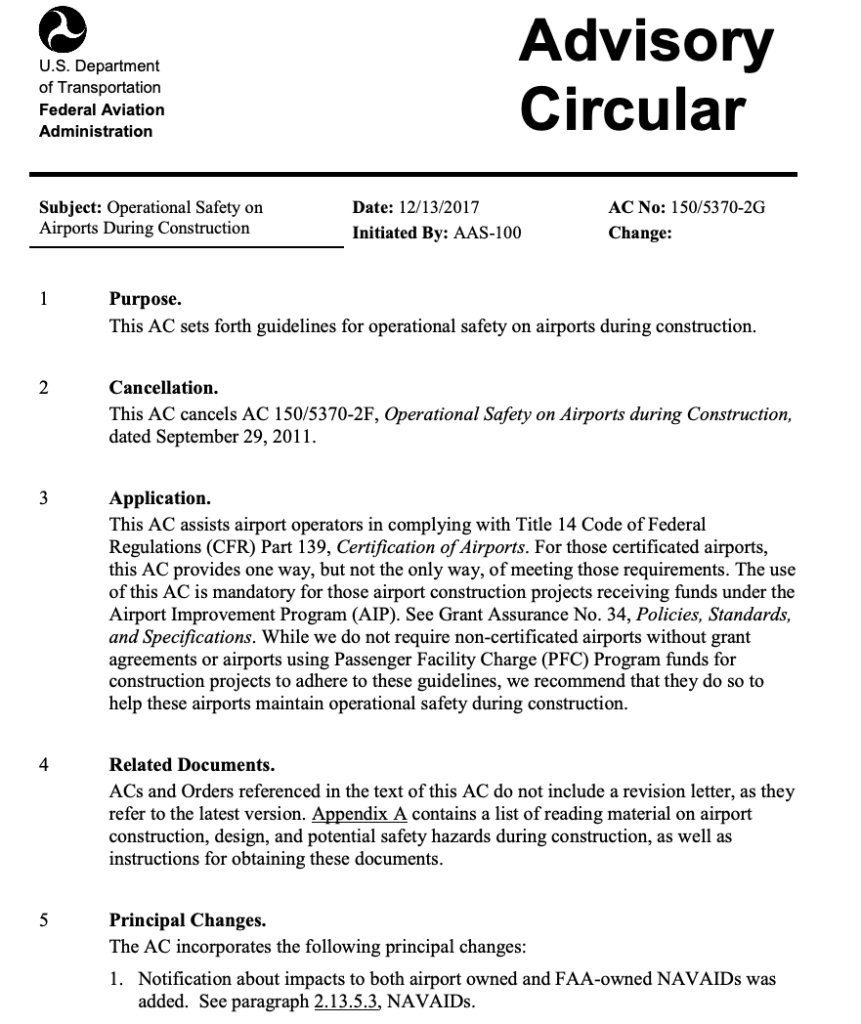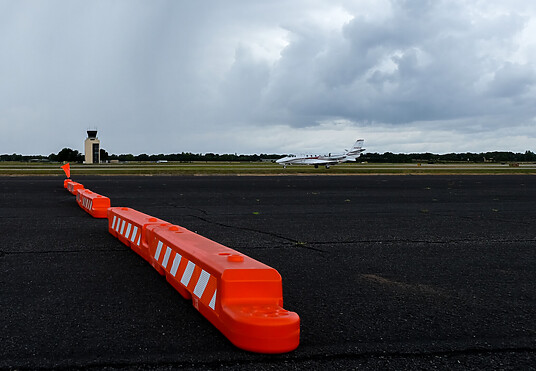Advisory Circulars and the FAA

What is an advisory circular?
Have you ever seen “FAA compliant” in one of our product descriptions and wondered just what that meant? The Federal Aviation Administration (FAA) is charged with the safety of the aviation field; in fact, its mission is to “provide the safest, most efficient aerospace system in the world”. This responsibility is a huge undertaking, and, understandably, comes with many rules and regulations that those working in the aviation industry must follow. These regulations, while comprehensive, are often long and full of technical jargon that might not be easily or quickly interpreted. This is where advisory circulars (AC) come in!
An advisory circular, essentially, is the cliff notes of the aviation world. They are a publication offered by the FAA to “inform the aviation public in a systematic way of non-regulatory material”, and are generally not regulations in themselves. They do, however, frequently reference or clarify regulations, and can be as short as simply referencing one, or longer and detail how to transition from one regulation to another, etc, so a more accurate description might be that they are published to provide guidance for compliance with various aspects of any given regulation.
These advisory circulars are published in series according to the topic and are searchable on the FAA website. While not technically binding, they often give enough detail to be considered as such and they (circulars) often describe actions or offer advice that the FAA expects to be implemented or followed… thus inferring that they should be!
Why does the FAA publish advisory circulars?
The FAA issues advisory circulars for many reasons: standardization, resolving misunderstandings, and helping the industry and FAA effectively implement a regulation among them. Because humans run the industry, there are many ways to interpret regulations and many ways to implement a specific operation… this can lead to confusion and differences in opinion on what a regulation might actually be. An advisory circular can offer specific guidelines for the aviation industry when the regulations or requirements might otherwise come across as vague or confusing, thus giving guidance for all on how to comply with the regulation in question.
What is the format?
An advisory circular (full PDF of example here) is meant to be a (more) concise and quickly comprehensible publication regarding regulations or notices for those in the aviation industry. A standard AC will frequently follow this format:

- Heading
- Subject – the title of the advisory circular
- Date – the date of the AC release
- AC Number – a three-part number, with each part pertaining to the reference where said AC can be found. Our example AC is numbered AC150/5370-2G.
- Part 1 is the subject matter – our example can be found in section 150, which pertains to the topics related to “Airports”.
- Part 2 is the sequence – ACs are numbered sequentially within each subject, so the second part of the number references in which order they were published. Our example is number 5370-2 in its respective subject matter category.
- Part 3 is revision, if any – any AC that has been revised will end its number with a letter of the alphabet. Our example ends with “G”, which means that this particular AC is in its seventh revision (as “G” is the seventh letter of the alphabet).
- Initiated by – this number lists who issued the advisory circular
- AFS stands for Aviation Flight Standards District, and the numerical value represents the particular office responsible for each AC change.

- Body Information (many subheadings will be covered, but not all are necessary for every advisory circular):
- Purpose – the reasoning behind publishing the specific AC
- Audience – who, if any, this particular AC affects
- Where the AC can be found online
- Cancellation – the former AC, if any, that the new AC will replace
- Recommended Usage – how the FAA recommends the AC be followed.
- Related Regulations – any regulations that may be relevant to the AC
- Definitions – any words or phrases that might need further clarification can be found here
- Summary of Changes – if the current AC is a revision, you may find a summary of the changes that are being made
- Further information regarding the subject matter will be covered in the remainder of the circular

Advisory circulars – keeping airports safe
While the aviation public in general is able to access and receive ACs, they are most commonly distributed to pilots, mechanics, airport managers, and manufacturers (OTW is part of that category!). The subjects generally include flight schools, aircraft, airports, pilots, operations, or maintenance, so distributing necessary information (in an easy-to-understand format) to those in such sectors is incredibly important. Not every AC applies to every sector, so the intended audience is specified in each circular!
The AC referenced above is found in the “Airports” category, and, even more specifically, refers to airport regulations when any given airport is under construction. Thanks to an easy-to-understand AC, our low-profile barricades are actually carefully designed to meet this certification!
OTW is an expert in safety in both the construction and aviation industries, and we manufacture excellent safety products that comply with relevant FAA regulations and advisory circulars. We are proud to be a part of keeping airports safe… and compliant!


